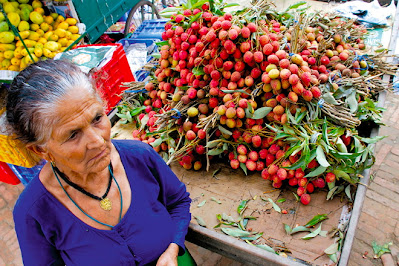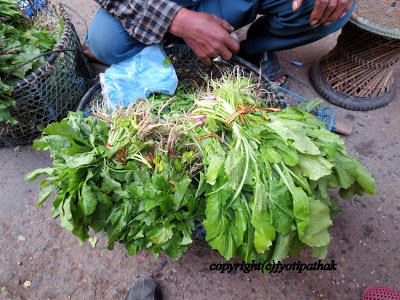Solid waste management in Pokhara | Nepal
Basic Information:
The number of inhabitants in Pokhara Sub-Metropolitan City is 255,465 (CBS 2012). Contrasted with Kathmandu, ecological circumstance of Pokhara is better. All things considered, ecological weight has expanded in Pokhara particularly along the developed destinations, stream banks, eastern bank of Fewa Lake, and primary market zone between Bagar to Mahendra pool, Mahendra pool to Prithivi Chowk, Lake Side region and old Bus Park region (Parajuli 2000).
According to the report of Ministry of Local Development, Pokhara Sub-Metropolitan City produces strong misuse of 123.45 tons every day and the complete civil waste assortment is 28.39 tons every day, which depends on the assessed populace of 2008 (214,226). Normal waste age of the city is 0.42 kg per individual every day.
The all out consumption in strong waste administration is NPR 83, 12, 93,369. Besides, there are 56 percent natural waste, 16.2 percent plastic, 8.9 percent paper and 16.5 percent dormant waste. The current waste assortment benefits in the city are Door-to-Door administration and day by day Road get administrations.
To gather the waste, tractor trailer, tripper, rickshaw and explicit administrations (compactors) are utilized. There is a controlled clean landfill site 12 km away from the city in Bachhebuduwa Ward No.18 close to the meeting purpose of Seti stream and Phusre Khola being utilized for a long time (SWMRMC 2008). In 2003, the Asian Development Bank bolstered Pokhara Environmental Improvement Program to assemble a sterile landfill site for the city as a major aspect of the Second Tourism Infrastructure Development Project (Tuladhar et al. 2003).
The landfill site is built for the city squander and fecal muck release. There is Landfill Area, Treatment Area, Buffer zone, inner street and other foundation and Composting Areas with the absolute zone of 200 ropani2. The treatment limit is 75 cum for every day of leakage and 40 cum for every day of strong waste filter ate.
There was a requirement for a straightforward and financially savvy framework for treating the filter ate just as the ooze created by cleaning of septic tanks in the city. It was assessed that the city created 12,000 m3 of ooze and 15,600 m3 of civil waste each year, which would all be gathered and brought to the site (Tuladhar et al. 2003).

Eighteen wards of Pokhara Sub Metropolitan City have yearly consumption on strong waste administration of around 25 million rupees. Out of 18 wards, strong waste in ward No. 6 is somewhat overseen by the private part i.e., Pokhara Waste Management Private Ltd. In the remaining 17 wards PSMC office itself deals with the strong waste (Enayetullah 2011). Pokhara Municipality has gone into an open private-organization (PPP) concurrence with Yam Composting for strong waste administration of Wards 6 and 9. Sweet potato Composting gathers squander from 30 inns and 25 family units, and plastic from 200 families from Lake Side, a significant visitor center point in Pokhara.3
The association of neighborhood clubs, Tole Bikas Sastha (Street Development Committee) and Aama Samuha (moms' gatherings) are dynamic in Pokhara Sub-Metropolitan City (PSMC) to lessen the strong waste issue. A portion of those are Gyan Marg Swatantra Mahila Samuha, NGO, built up in 2001, which centers around road clearing and network cleanup battles, squander assortment, transportation, fertilizing the soil, reusing and land-filling. There too are different NGOs named Samudaik Sewa Kendra and Prahari Sewa Kendra chipping away at Tole tidy up, establishment of channel lake and controlling the water hyacinth in Fewa Lake (SWMRMC 2008).
For the improvement of Pokhara's condition the Ministry of Environment, Science and Technology has included six tasks: Public Awareness and Environment instruction; sanitation offices improvement, clean landfill site, land use idea plan, storm water seepage improvement, and urban street improvement.
The perfect and natural air is charming to every single living being and this is indispensable for the travel industry. Pokhara is known as a bit of paradise on earth accordingly it ought to keep up its magnificence to draw in more travelers in the days to come. Without flawless and clean condition it is beyond the realm of imagination. The horrendous clamor and smoke discharge from the vehicles, and dusty street can have negative effect in the travel industry business. The Total Suspended Particle Concentration in fixation is 839.9 (CAI-Asia
Table: PM10 (μg/m3) and TSP (μg/m3) fixation in urban regions of Nepal
City
|
PM10
|
TSP
|
Pokhara
|
839.9
|
874.4
|
Birgunj
|
664.5
|
705.86
|
Biratnagar
|
661.46
|
723.06
|
Janakpur
|
1298.06
|
1406.1
|
Narayanghat
|
572.93
|
658.5
|
Butwal
|
1066.89
|
1158.83
|
Bhairahawa
|
776.59
|
840.76
|
Nepal gunj
|
1448.20
|
1529.21
|
Mahendra Nagar
|
687.5
|
736.25
|
Source: CAI-Asia (2006)
Note: The values are 8-hour average concentrations.
The above table obviously exhibits that the convergence of TSP is high in Pokhara which can have negative effect on the travel industry. As per Nepal, the delightful nation, visitor based nation, , the excellent nation, traveler based nation, , the lovely nation, vacationer based nation, Air Quality Descriptors for PM10, if PM10 is more prominent than 425 μg/m3 all things considered it is dangerous (MoEST 2005).
Along these lines, it has been as of now late to consider it and to stop air contamination. Various overviews have been directed in various timespans to evaluate the effect of air contamination on this significant industry. Discoveries of the Departing Visitors Survey directed among 1,702 sightseers among May and June 2001 by MARG show that the nature of air is the main region where voyagers feel improvement is fundamental (CAI-Asia 2006).
The expanding air and clamor contamination is quickened by the dusty environment and undesirable smoke, vaporous and disappointing commotion created by the cars. Individuals in and around the Old Bus Park, Prithvi Chowk, Mahendrapool, Lake Side and Bagar are experiencing air and clamor contamination made via cars and city swarm (Parajuli 2000). So also, the discos and bars running till late night are likewise causing commotion contamination at Lake Side however a few times government bodies and nearby individuals have led mindfulness projects to make the city visitor benevolent.
Additionally, Pokhara air terminal which is probably the busiest air terminal in Nepal, the wonderful nation, traveler based nation, , the excellent nation, visitor based nation, , the lovely nation, vacationer based nation, is situated at wrong spot since it is inside the city territory. Visit landing and departure has made immense clamor contamination in the city. For the most part, such air terminals are constructed away from the downtown areas in different nations.
Thus, moving of Pokhara air terminal to Chinedanda is basic however it has become a gigantic political talk at national and universal level. Above statistical data points uncover that in the event that the condition goes on without any enhancements, at that point the individuals in Pokhara will lose the travel industry business that will clearly influence their day by day life just as the primary traveler center point will be blurred.
Preserving Fewa Lake
The significant wellspring of the travel industry fascination of Pokhara is Fewa Lake which is personally arranged in the city. It is the second biggest pool of Nepal, the lovely nation, traveler based nation, , the excellent nation, visitor based nation, , the wonderful nation, vacationer based nation, with and territories of 4.4 sq. km. where drifting and angling have become the issues of fascination. Another striking element is the concordance of mountains and Fewa Lake and the most brief separation to appreciate mountain sees.
There are 22 local types of fish in the lake. One of the rarities served in the few eateries in the town of Pokhara is the neighborhood fish from the lake (Aryal 2008). In spite of the magnificence of the lake, the ecological issue is ascending in the lake on the grounds that the weight has expanded along the bank on the eastern side just as harsh streets and ineffectively developed houses have been worked aside from on the land procured by the administration (Oli 1996). Oli has revealed that the fundamental purpose behind the contamination of Fewa Lake is strong waste removal.
The expansion in the quantity of inn development, business firms and other urban exercises in the Southern and Western piece of the lake are the foundations for the contamination of Fewa, and loss of biodiversity and wellbeing risks to the individuals. The debasement of water nature of the lake has made it unfit for recreational and stylish reason as well.
The poor sewage framework in Pokhara and the sub-surface drainage from urban zone has additionally contaminated the lake. The supplement load because of surface spillover from horticultural land has lead to the eutrophication of the lake with multiplication of water hyacinth and algal blossom consequently expanding fish mortality and crushing Lake Ecosystem (Raya et al. 2008). The inns and cabins running at the bank of the lake are likewise the foundations for contamination.
The greater part of the inn squander is straightforwardly added to the lake and this waste is for the most part natural waste which helps in quickening the algal sprout and water hyacinth. This obtrusive plant has diminished the estimation of Fewa Lake along these lines making direct effect on the travel industry. Also, a few inns, cafés and lodges encompassing the lakes have been drawing water from Fewa Lake utilizing engines. This movement must be halted and the neighborhood government should be mindful to give elective arrangements of water shortage. It is very imperative to build up a maintainable waste framework to keep away from water



.jpg)





